Ioanna Miliou
Counterfactual Explanations for Time Series Forecasting
Oct 12, 2023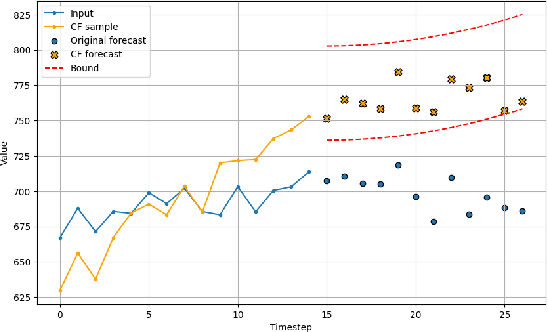
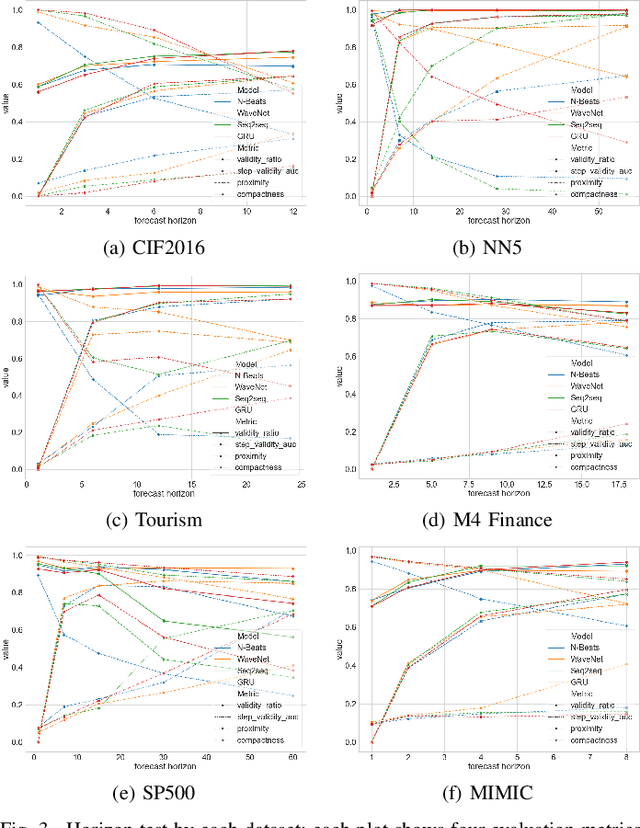
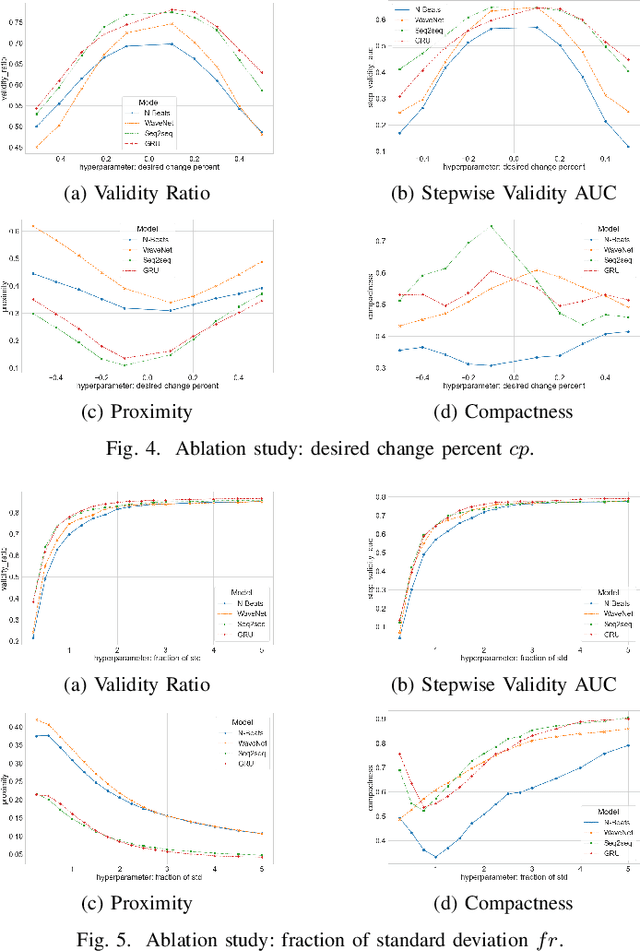

Abstract:Among recent developments in time series forecasting methods, deep forecasting models have gained popularity as they can utilize hidden feature patterns in time series to improve forecasting performance. Nevertheless, the majority of current deep forecasting models are opaque, hence making it challenging to interpret the results. While counterfactual explanations have been extensively employed as a post-hoc approach for explaining classification models, their application to forecasting models still remains underexplored. In this paper, we formulate the novel problem of counterfactual generation for time series forecasting, and propose an algorithm, called ForecastCF, that solves the problem by applying gradient-based perturbations to the original time series. ForecastCF guides the perturbations by applying constraints to the forecasted values to obtain desired prediction outcomes. We experimentally evaluate ForecastCF using four state-of-the-art deep model architectures and compare to two baselines. Our results show that ForecastCF outperforms the baseline in terms of counterfactual validity and data manifold closeness. Overall, our findings suggest that ForecastCF can generate meaningful and relevant counterfactual explanations for various forecasting tasks.
Early prediction of the risk of ICU mortality with Deep Federated Learning
Dec 05, 2022Abstract:Intensive Care Units usually carry patients with a serious risk of mortality. Recent research has shown the ability of Machine Learning to indicate the patients' mortality risk and point physicians toward individuals with a heightened need for care. Nevertheless, healthcare data is often subject to privacy regulations and can therefore not be easily shared in order to build Centralized Machine Learning models that use the combined data of multiple hospitals. Federated Learning is a Machine Learning framework designed for data privacy that can be used to circumvent this problem. In this study, we evaluate the ability of deep Federated Learning to predict the risk of Intensive Care Unit mortality at an early stage. We compare the predictive performance of Federated, Centralized, and Local Machine Learning in terms of AUPRC, F1-score, and AUROC. Our results show that Federated Learning performs equally well as the centralized approach and is substantially better than the local approach, thus providing a viable solution for early Intensive Care Unit mortality prediction. In addition, we show that the prediction performance is higher when the patient history window is closer to discharge or death. Finally, we show that using the F1-score as an early stopping metric can stabilize and increase the performance of our approach for the task at hand.
FLICU: A Federated Learning Workflow for Intensive Care Unit Mortality Prediction
May 30, 2022
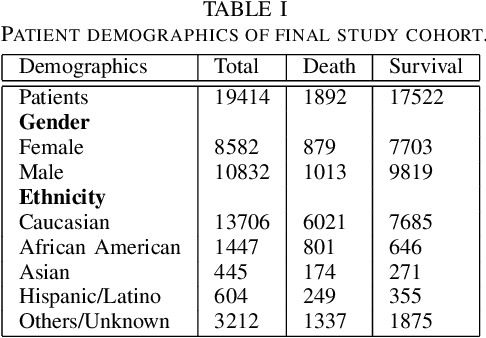
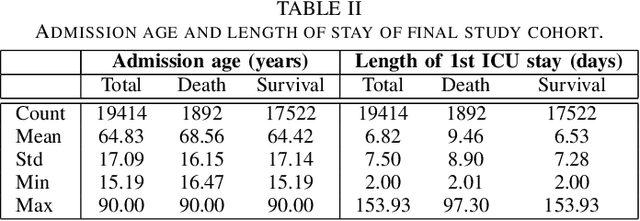
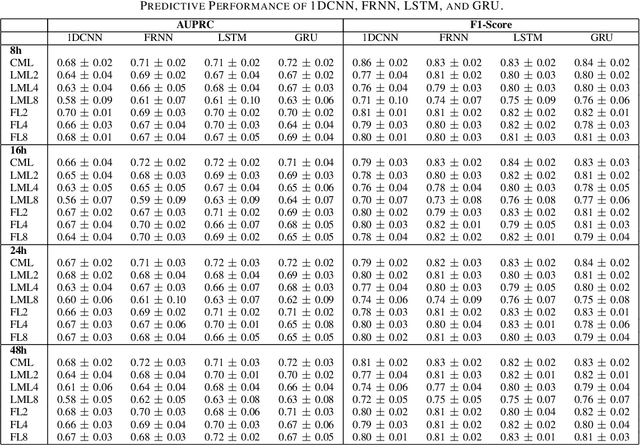
Abstract:Although Machine Learning (ML) can be seen as a promising tool to improve clinical decision-making for supporting the improvement of medication plans, clinical procedures, diagnoses, or medication prescriptions, it remains limited by access to healthcare data. Healthcare data is sensitive, requiring strict privacy practices, and typically stored in data silos, making traditional machine learning challenging. Federated learning can counteract those limitations by training machine learning models over data silos while keeping the sensitive data localized. This study proposes a federated learning workflow for ICU mortality prediction. Hereby, the applicability of federated learning as an alternative to centralized machine learning and local machine learning is investigated by introducing federated learning to the binary classification problem of predicting ICU mortality. We extract multivariate time series data from the MIMIC-III database (lab values and vital signs), and benchmark the predictive performance of four deep sequential classifiers (FRNN, LSTM, GRU, and 1DCNN) varying the patient history window lengths (8h, 16h, 24h, 48h) and the number of FL clients (2, 4, 8). The experiments demonstrate that both centralized machine learning and federated learning are comparable in terms of AUPRC and F1-score. Furthermore, the federated approach shows superior performance over local machine learning. Thus, the federated approach can be seen as a valid and privacy-preserving alternative to centralized machine learning for classifying ICU mortality when sharing sensitive patient data between hospitals is not possible.
Understanding peacefulness through the world news
Jun 03, 2021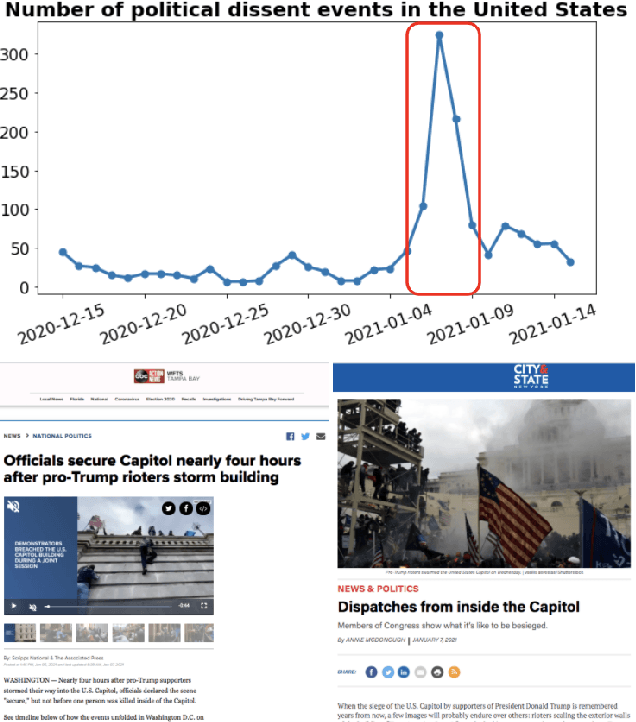
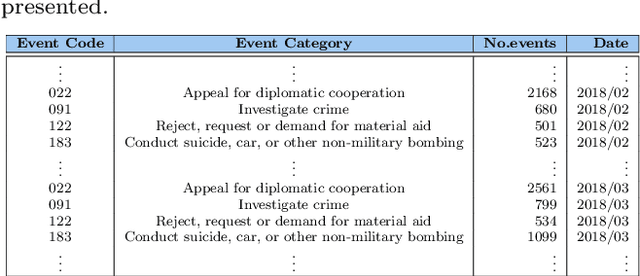
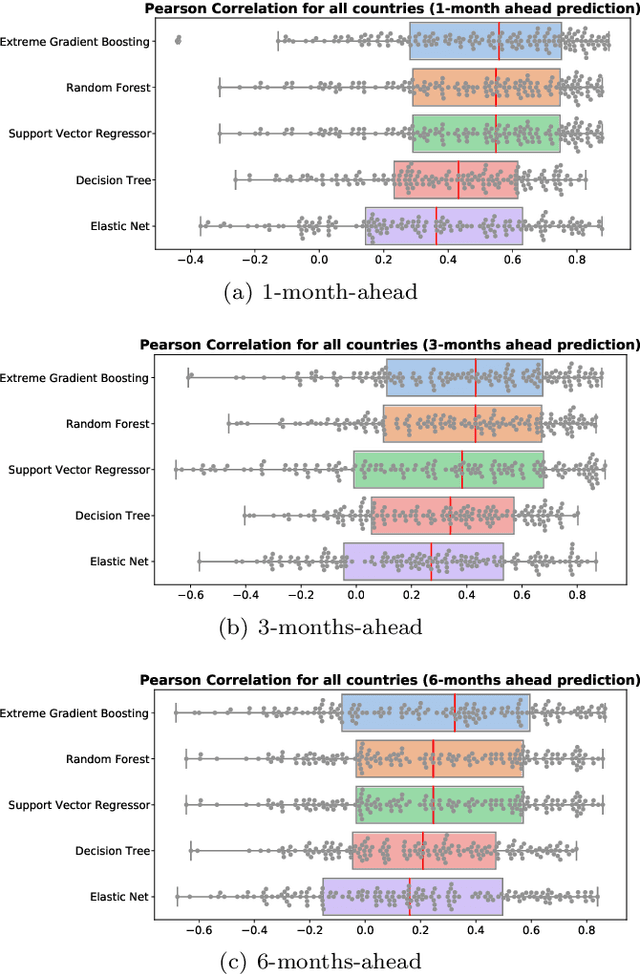
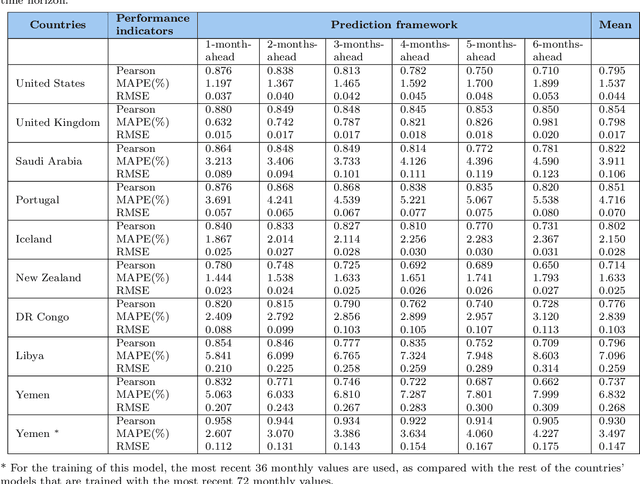
Abstract:Peacefulness is a principal dimension of well-being for all humankind and is the way out of inequity and every single form of violence. Thus, its measurement has lately drawn the attention of researchers and policy-makers. During the last years, novel digital data streams have drastically changed the research in this field. In the current study, we exploit information extracted from Global Data on Events, Location, and Tone (GDELT) digital news database, to capture peacefulness through the Global Peace Index (GPI). Applying predictive machine learning models, we demonstrate that news media attention from GDELT can be used as a proxy for measuring GPI at a monthly level. Additionally, we use the SHAP methodology to obtain the most important variables that drive the predictions. This analysis highlights each country's profile and provides explanations for the predictions overall, and particularly for the errors and the events that drive these errors. We believe that digital data exploited by Social Good researchers, policy-makers, and peace-builders, with data science tools as powerful as machine learning, could contribute to maximize the societal benefits and minimize the risks to peacefulness.
Predicting seasonal influenza using supermarket retail records
Dec 17, 2020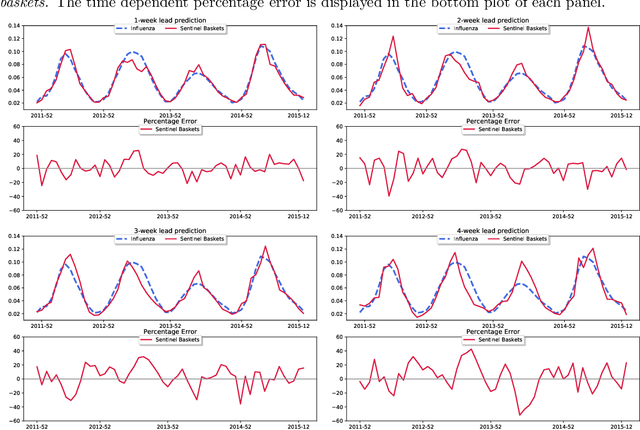


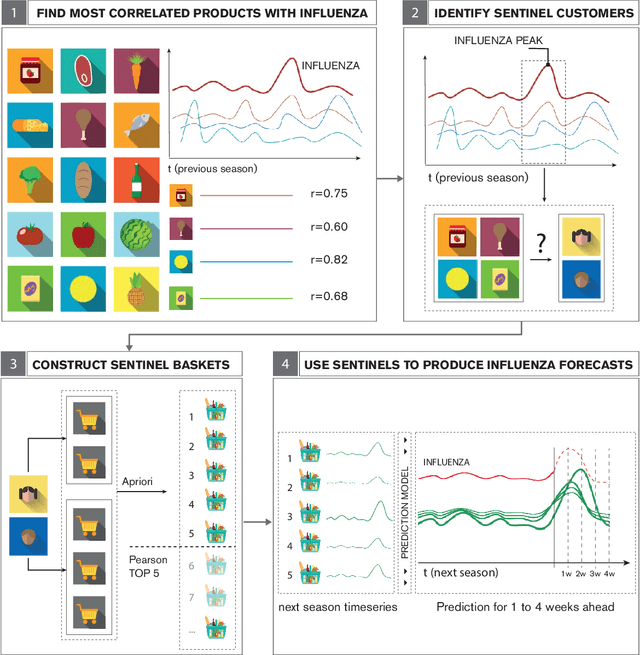
Abstract:Increased availability of epidemiological data, novel digital data streams, and the rise of powerful machine learning approaches have generated a surge of research activity on real-time epidemic forecast systems. In this paper, we propose the use of a novel data source, namely retail market data to improve seasonal influenza forecasting. Specifically, we consider supermarket retail data as a proxy signal for influenza, through the identification of sentinel baskets, i.e., products bought together by a population of selected customers. We develop a nowcasting and forecasting framework that provides estimates for influenza incidence in Italy up to 4 weeks ahead. We make use of the Support Vector Regression (SVR) model to produce the predictions of seasonal flu incidence. Our predictions outperform both a baseline autoregressive model and a second baseline based on product purchases. The results show quantitatively the value of incorporating retail market data in forecasting models, acting as a proxy that can be used for the real-time analysis of epidemics.
 Add to Chrome
Add to Chrome Add to Firefox
Add to Firefox Add to Edge
Add to Edge